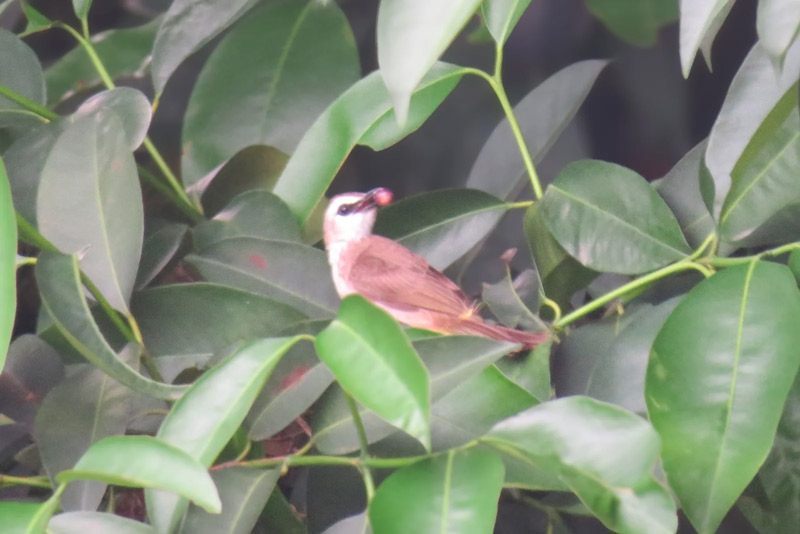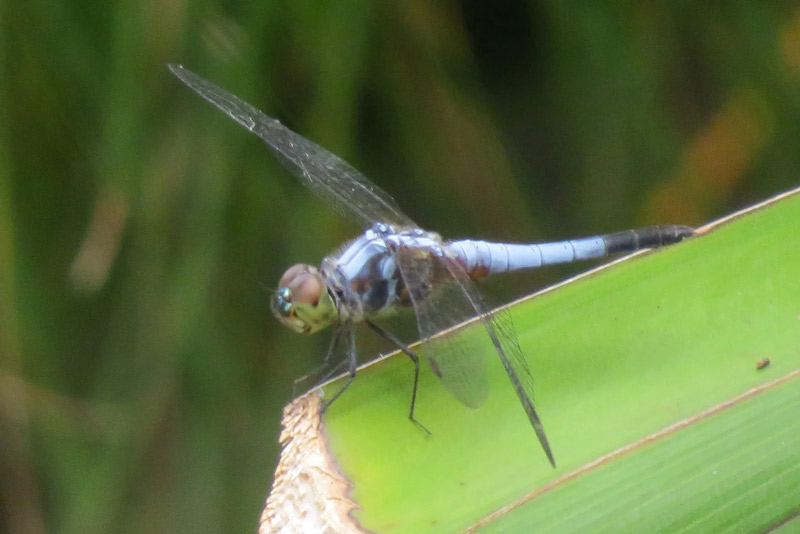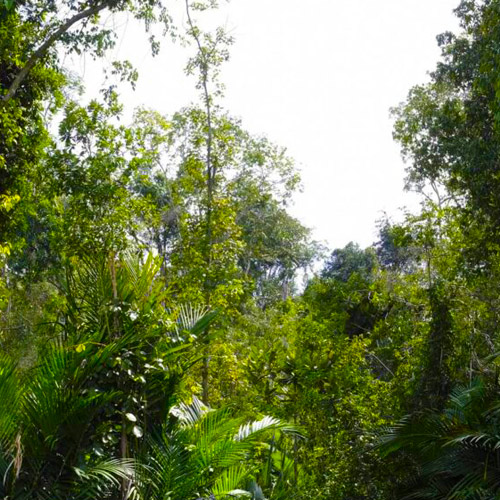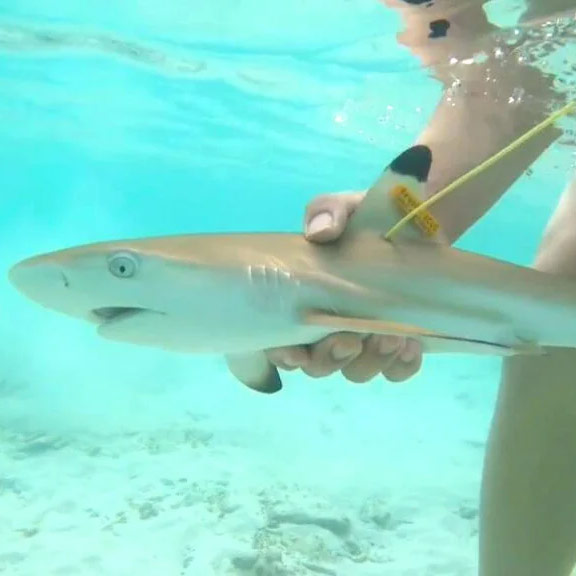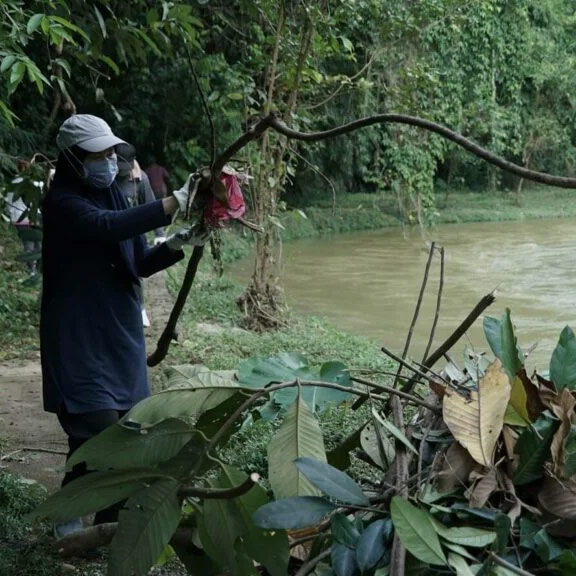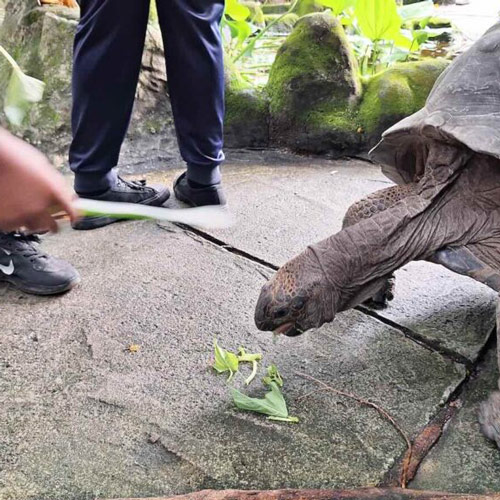Note: This story might contain factual or contextual inaccuracies as it was submitted by the authors as part of a competition and was published for the judges to evaluate without any editing or corrections made by the organisers or YELL.
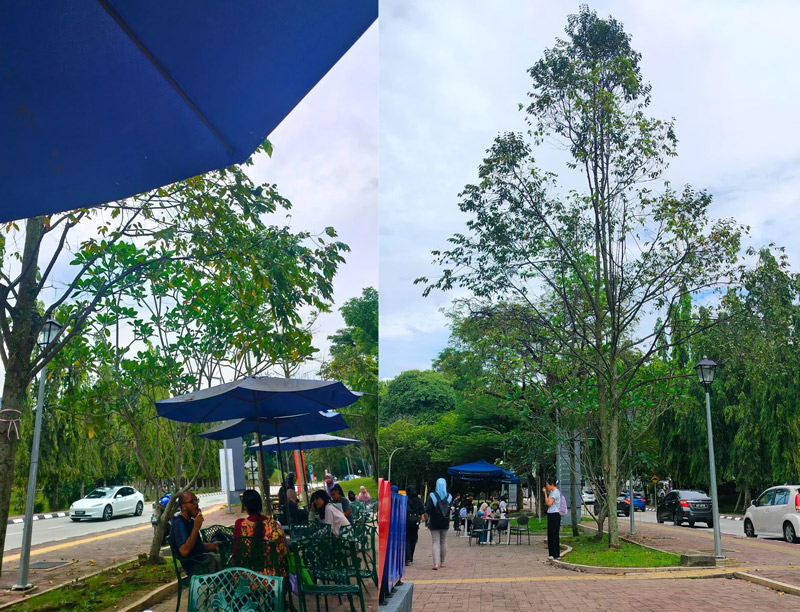 The familiar path, UM Central. (Credit: KW Chew)
The familiar path, UM Central. (Credit: KW Chew)
Every student and staff member at Universiti Malaya must’ve been familiar with this path. What comes to mind? The passing crowds, the aromatic coffee, the rumbling buses, or the sweaty weather. These are the everyday scenes on this path.
But have you ever looked closer? You might spot squirrels climbing around trees, or if you’re lucky, the rare occurrence of Common Flameback Woodpeckers foraging, as these scenes are normally expected to be seen in forested parks like Bukit Gasing or Bukit Kiara. Yet, it’s right here, on campus.
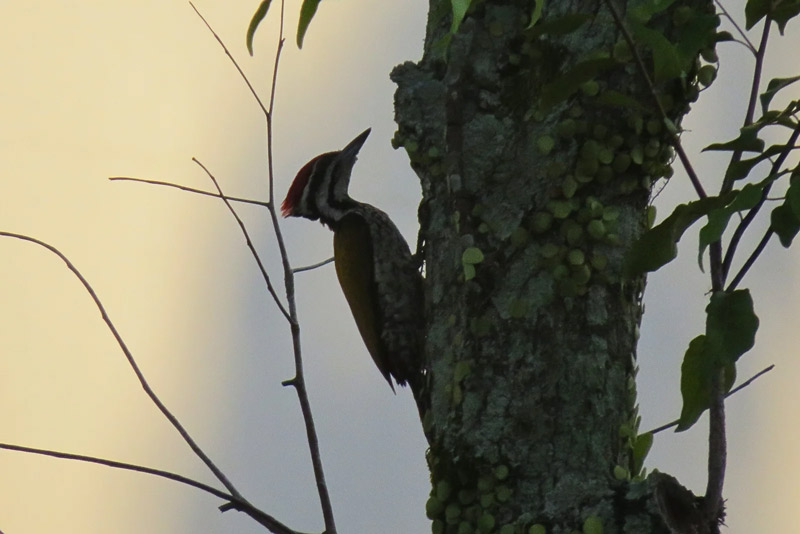 A Common Flameback (Dinopium javanense) spotted in front of the Main Library (Credit: KW Chew)
A Common Flameback (Dinopium javanense) spotted in front of the Main Library (Credit: KW Chew)
All of these are part of biodiversity, a word that simply means the wide variety of living things around us.
Here at the Universiti Malaya, located in the heart of bustling Kuala Lumpur, many agree that the campus still holds a surprising amount of green spaces. But how much biodiversity can truly thrive when surrounded by concrete and city noise?
We conducted a survey involving 61 people from the campus community. 40% admitted they either weren’t sure what biodiversity is or didn’t know where to find it. 8.2% believed that there is no significant biodiversity on campus surrounded by an urban setting, while 32.8% weren’t sure whether it can be harboured here.
To answer that question, let’s look around Varsity Lake, the campus’ iconic landscape, which is only a stone’s throw away from UM Central.
The first creatures to attract our attention are the White-breasted Waterhens. They used to be regular residents of the lake, with a diet of insects and small fish that overpopulate the lake. This helps improve the nutrient cycle within wetland ecosystems.
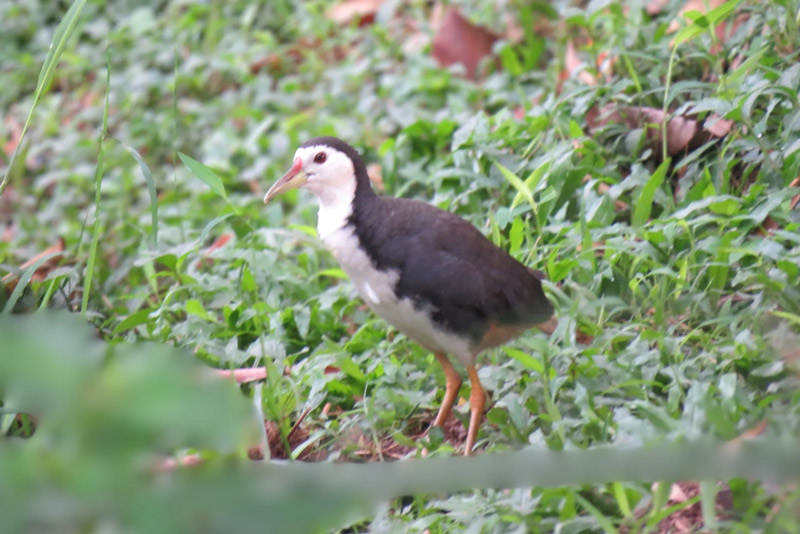 A White-breasted Waterhen (Amaurornis phoenicurus) (Credit: KW Chew)
A White-breasted Waterhen (Amaurornis phoenicurus) (Credit: KW Chew)
We’re also attracted to the White-throated Kingfisher. Although its name is a nod to royalty, it scavenges everything, from insects to small mammals, helping to control their populations. The same can be seen through the Striated Herons in shallower waters.
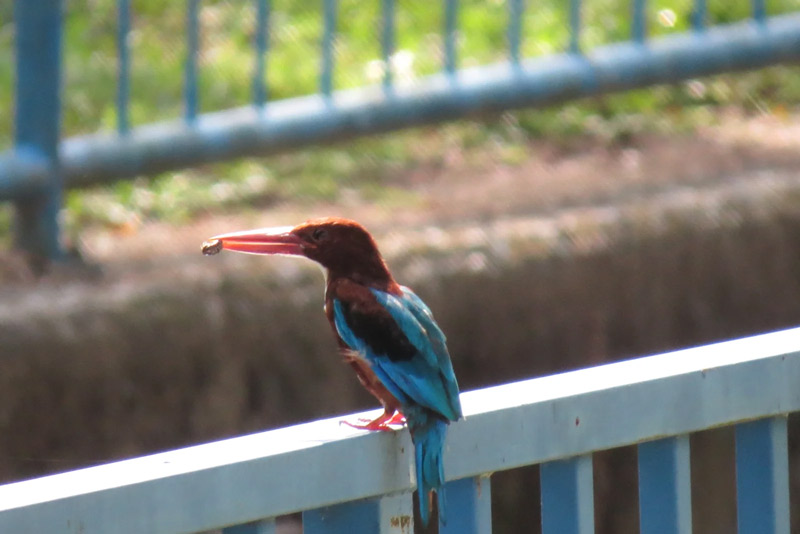 A White-throated Kingfisher (Halcyon smyrnensis) caught prey. (Credit: KW Chew)
A White-throated Kingfisher (Halcyon smyrnensis) caught prey. (Credit: KW Chew)
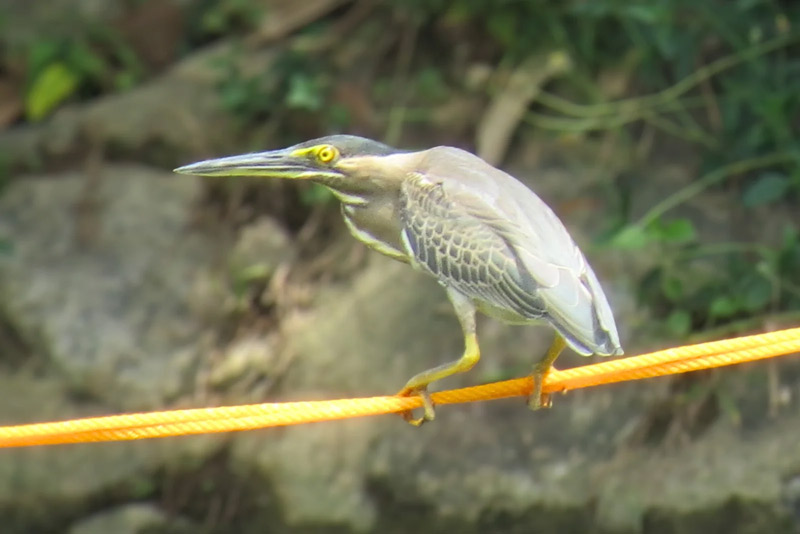
A Striated Heron (Butorides striata). (Credit: KW Chew)
If you think all pigeons come in dull colours, this pigeon will surprise you! Meet the Pink-necked Green Pigeon, with distinct differences between males and females. The male has a soft pink neck, a vibrant orange breast, and a blue-grey head, while the female is subtler, with greenish plumage that blends into the leaves.
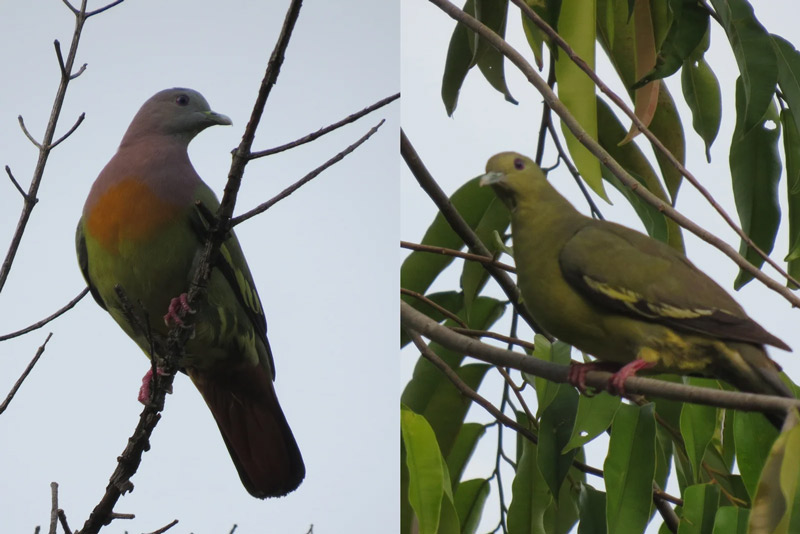 A male Pink-necked Green Pigeon (left) and a female Pink-necked Green Pigeon (right) (Treron vernans). (Credit: KW Chew)
A male Pink-necked Green Pigeon (left) and a female Pink-necked Green Pigeon (right) (Treron vernans). (Credit: KW Chew)
A Yellow-vented Bulbul (Pycnonotus goiavier). (Credit: KW Chew)
Beyond birds, there’s other life to see.
With a similar ecological role, the Plantain Squirrel munches on its fruity meal, dispersing seeds throughout their habitat by burying them in soil and trees.
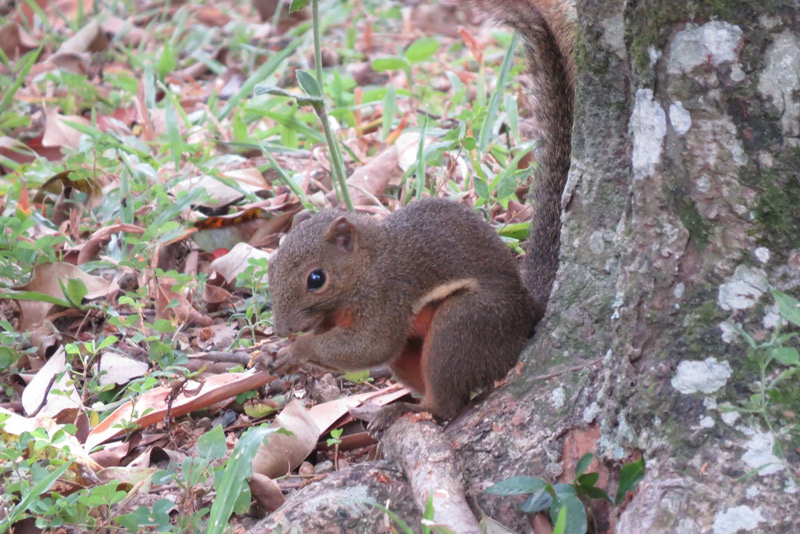 A Plantain Squirrel, Callosciurus notatus. (Credit: KW Chew)
A Plantain Squirrel, Callosciurus notatus. (Credit: KW Chew)
Look closely and one’ll find that many tiny toads are amongst the grass, which reminds us to slow down, to be aware of our steps, and the surroundings.
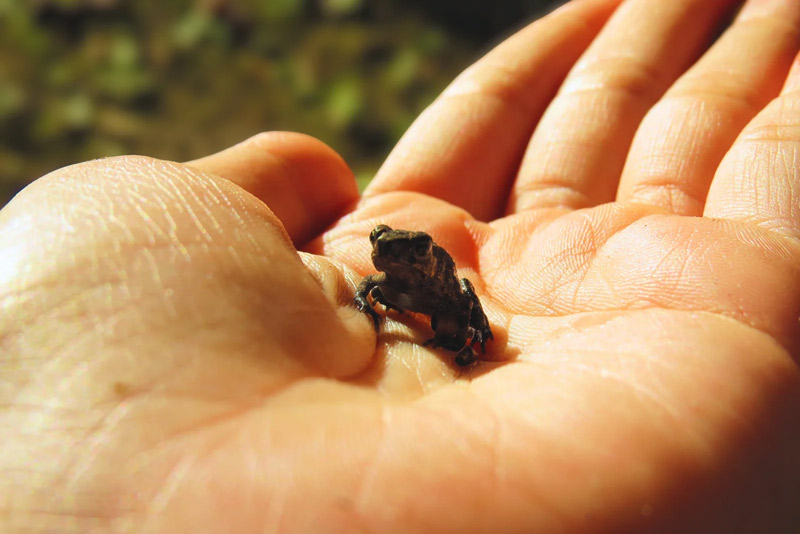 A tiny toad. (Credit: KW Chew)
A tiny toad. (Credit: KW Chew)
Among biodiversity, insects are often ignored or unwelcome. Yet, they are essential contributors to the ecosystem.
A wide diversity of dragonflies and damselflies hover or rest near the open water. They are good indicators of water quality, as these sensitive species require clean, unpolluted environments to thrive. They play vital roles in the food web, to prey on small insects, contribute to natural pest control, and serve as prey for birds and other animals.
A resting Oriental Blue Dasher (Brachydiplax chalybea). (Credit: KW Chew)
Much like the Peacock Pansy butterfly that flutters over the nectar plants, collecting nectar and pollinating plants.
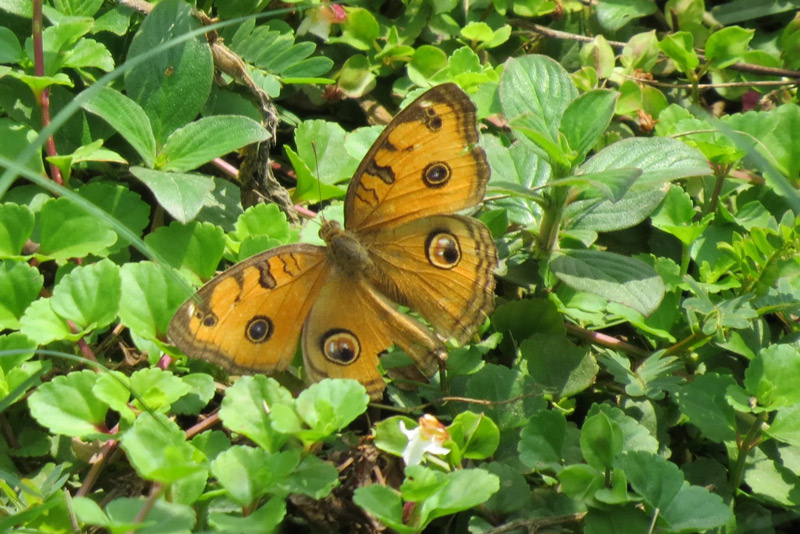 A Peacock Pansy (Junonia almana). (Credit: KW Chew)
A Peacock Pansy (Junonia almana). (Credit: KW Chew)
Nearby, the humble Creeping Ruellia grows,which is often seen as weed from humans’ perspectives. However, to the caterpillar of the Peacock Pansy, is not a nuisance, as the plants are a vital host plant, offering food and shelter for them.
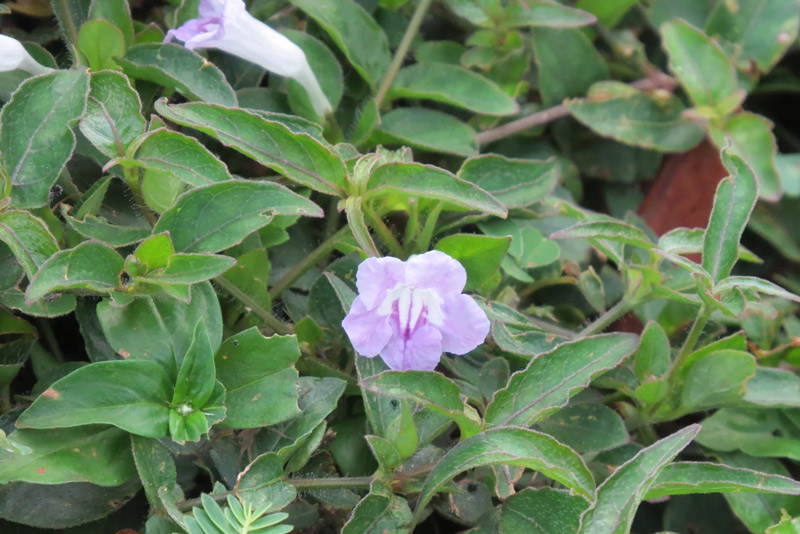 Creeping Ruellia (Ruellia repens). (Credit: KW Chew)
Creeping Ruellia (Ruellia repens). (Credit: KW Chew)
Beside the lake, trees are fruiting, providing food sources for the frugivorous birds and bats, and sometimes, even hungry humans!
All these observations were made in the span of days. Varsity Lake isn’t a dense forest; it’s an accessible space for everyone. Although located at the core of the urban environment, biodiversity thrives.
But Varsity Lake is only one part of the bigger picture. The campus has lots of secluded green areas, especially the Rimba Ilmu and campus hills like Bukit Cinta, with denser vegetation that serves as sanctuaries of life.
We often think of biodiversity as something found only in exotic rainforests, wetlands, or coral reefs. But the truth is, you don’t need to venture far to find it. With every step we take, life surrounds us. It’s in the soil beneath our feet, in the air above us, and quietly hidden around us. It gives us the air we breathe, the food we eat, and the countless services we often take for granted. We coexist with biodiversity and depend on it. Yet, as development spreads, most remain undocumented and unappreciated.
But that can change. Anyone can play a role in discovering and protecting it. With tools like iNaturalist and the power of citizen science, everyday observations become valuable data for research, conservation planning, and environmental awareness. This isn’t something distant or difficult. All it takes is curiosity and a willingness to look a little closer. By simply capturing a photo, adding date and location information, and uploading it. The global community will help identify and log the species. Although not all sightings are verified instantly, community review ensures that accuracy improves over time. Every photo uploaded contributes to the growing global archive of biodiversity.
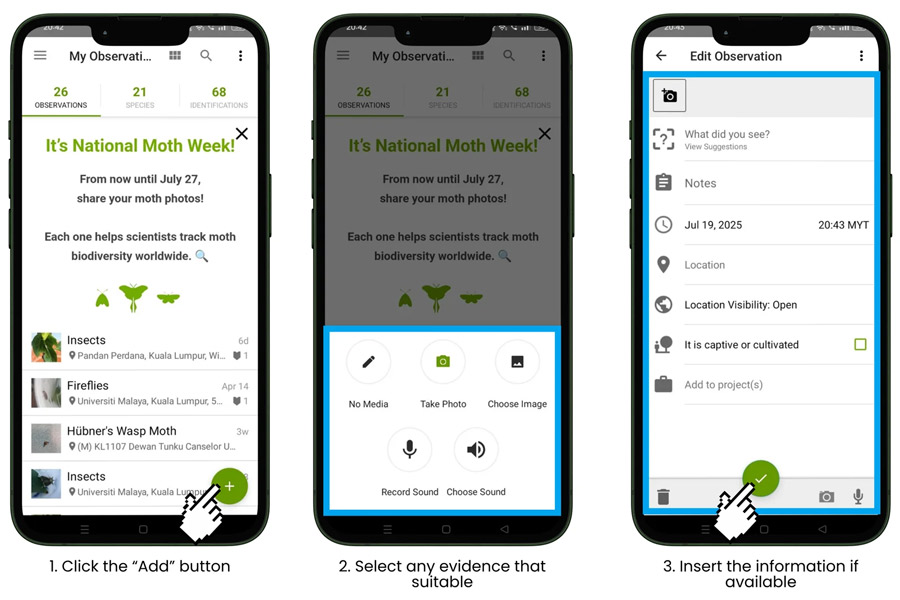 Basic way to use iNaturalist. (Credit: PX Lee)
Basic way to use iNaturalist. (Credit: PX Lee)
Conservation isn’t limited to large-scale initiatives. It can start with something as small as noticing, acknowledging their existence, and appreciating their role in sustaining the ecosystem. Hence, building connection and igniting the passion to protect our natural legacy, we will never truly lose biodiversity.
Disclosure: The team used ChatGPT to outline the story idea (with their own ideas as input), brainstorm the reporting plan, brainstorm interview questions, and identify and check for jargon in the story. They also used Grammarly to check for grammar mistakes.
This story is a finalist entry that was produced as part of the “Environmental Stories Workshop and Competition”. The workshop and competition was co-organised by Macaranga Media, Universiti Malaya, and Taylor’s University. The event was funded by a grant from Youth Environment Living Labs (YELL), administered by Justice for Wildlife Malaysia. The content of this story does not necessarily reflect the opinion of YELL and their partners. The Award Ceremony will be held on 2 August at Universiti Malaya.
Source:
https://www.macaranga.org/seen-and-unseen-the-hidden-biodiversity-of-universiti-malaya/







